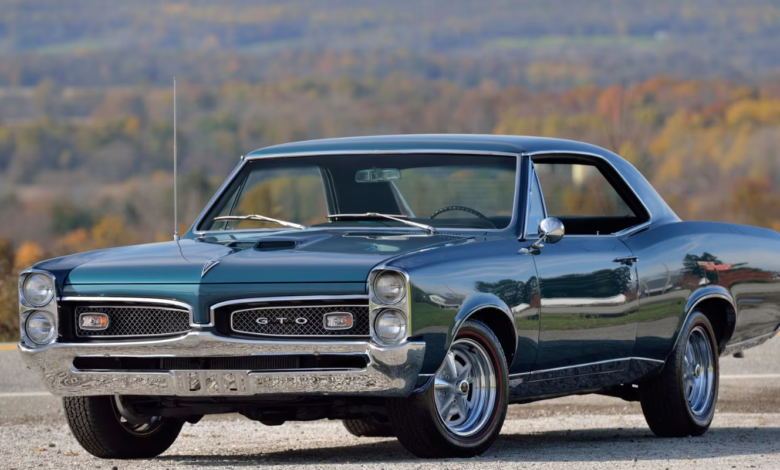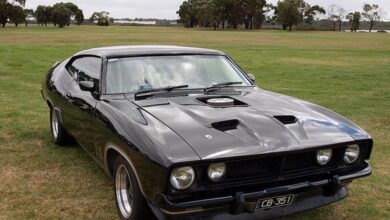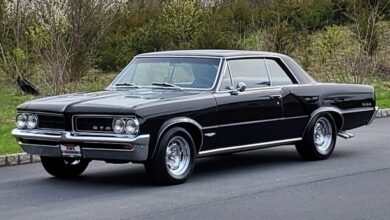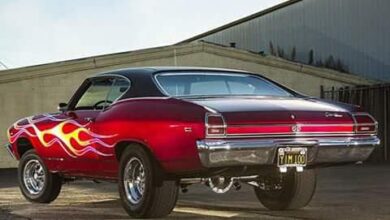1967 Pontiac GTO

The 1967 Pontiac GTO is a defining model in the American muscle car era, earning its place as a classic for its aggressive style, performance, and innovation. Here’s a detailed review of this iconic car:
Exterior and Styling:
The 1967 GTO was the final model year of the first-generation GTO, and it showcased Pontiac’s commitment to bold design. It featured a distinct split grille, stacked headlights, and a long, sleek body that gave it a muscular and aggressive appearance. The slight changes from the previous year included a redesigned front grille and a more sculpted rear end, making the car look even more refined yet aggressive.
The body lines are clean and fluid, with subtle chrome accents that enhance its timeless appeal. The GTO’s presence on the road was unmistakable, and it became an emblem of American muscle. With a range of vivid color options and sporty hood scoops, the 1967 model struck a perfect balance between elegance and raw power.
Engine and Performance:
The ’67 GTO packed a punch under the hood. It came standard with a 400 cubic inch (6.6-liter) V8 engine, replacing the earlier 389ci engine. It was offered in three different configurations:
- Base 400 V8: 335 horsepower.
- 400 HO V8: 360 horsepower with a high-performance camshaft and better breathing.
- Ram Air Package: 360 horsepower but with improved high-rev performance due to a functional air intake system.
Paired with either a 4-speed manual or 3-speed automatic transmission, the GTO was capable of 0-60 mph in just under 6 seconds, making it one of the fastest cars of its time. The car had a responsive throttle, and the high torque allowed for impressive acceleration and strong performance in straight-line speed.
Ride and Handling:
The 1967 GTO wasn’t just a straight-line performer. It featured a wide-track stance, which improved handling and stability for its time. While it didn’t handle as tightly as modern cars, it was relatively composed through corners compared to many of its rivals. The addition of a front disc brake option was a significant improvement over the earlier models, helping to improve stopping power. However, the suspension was more tailored toward a smooth, comfortable ride rather than precision handling, which made it a great car for cruising.
Interior:
Inside, the GTO continued the sporty theme with a clean, driver-focused design. Bucket seats were standard, along with a center console. The dashboard featured a stylish layout with easily readable gauges and optional wood-grain trim that added to the car’s upscale feel. It also had an optional Rallye gauge cluster, which included a tachometer, a rare feature for the time. While spacious enough for front passengers, the rear seats were a bit tight, especially in the hardtop and convertible models.
The overall feel of the cabin was one of comfort and performance—a perfect blend for both daily driving and weekend joyrides.
Innovations and Legacy:
One of the innovations in the 1967 model was the introduction of the “His and Hers” Hurst dual-gate shifter on automatic transmissions, which allowed the driver to shift manually or let the car handle the shifting automatically. This feature added to the car’s appeal to enthusiasts who wanted more control over the driving experience.
The 1967 GTO is often considered one of the most balanced GTOs of the entire lineup. Its combination of refined looks, powerful engines, and relatively advanced technology for the time cemented its place in automotive history.
Verdict:
The 1967 Pontiac GTO is a masterpiece of muscle car design and performance. It offered enthusiasts a unique blend of style, speed, and luxury. While it may not handle like a modern sports car, its raw power and timeless design make it a sought-after classic. Whether you’re a collector or just an admirer of muscle car heritage, the ’67 GTO stands out as one of the most iconic vehicles of the 1960s.
Pros:
- Powerful V8 engine options.
- Aggressive, timeless styling.
- Improved braking (optional front discs).
- Smooth ride for long-distance cruising.
Cons:
- Handling can be cumbersome by modern standards.
- Rear seat space is limited.
- High fuel consumption (as expected for a muscle car).
The 1967 GTO remains a symbol of American muscle and car culture, representing an era when performance and style were paramount.




